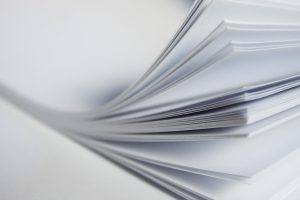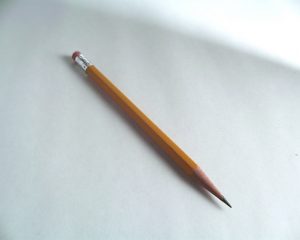 Vellum (5th century- 13th century)
Vellum (5th century- 13th century)
According to the New World Encyclopedia, “vellum is a sort of processed animal hide that is thin, smooth, durable and was used in the pre-printing age to produce written works in the form of a scroll, codex, or book”. Vellum is so durable, it is known to last for up to a thousand years, and thanks to this characteristic, we are able to continue to preserve and examine texts and works of art from medieval times. While it isn’t nearly as popular today among the general masses, vellum is still used for archival purposes for British Acts of Parliament and in the record keeping in the Republic of Ireland.
Vellum is produced by taking the skin of an unborn calf, traditionally, and having it soaked, limed, and scudded. Then, it needs to be stretched over a wooden frame until it is dry. All for one page to write on. The use of vellum meant the use of many, many calf-skins. The 12th century Winchester Bible is made up of more than 250 calf-skins, and that isn’t including any vellum pages that had imperfections in them (Lyons 22). In fact, the Gutenberg Bible had 30 vellum copies created through the use of over 5,000 calf-skins (Lyons 55). This would have been a timely and costly project, and it’s also an example of why vellum is hardly used at all today. But, it did indeed thrive in a society where writing wasn’t a common practice.
 Paper (105 CE- present)
Paper (105 CE- present) The Pencil (1560’s-present)
The Pencil (1560’s-present)
Sometime in the 1560’s, a large graphite deposit was discovered in Cumbria, England by shepherds, who decided to dub the black substance “wadd” and brand their sheep with it. The wadd/graphite was noted for it’s superior line-making capabilities, erase-ability, and for the option to re-draw over top of it’s line with ink; something that couldn’t be accomplished with lead or charcoal. The graphite would also be mistakenly called “lead” due to great similarities between the two substances, even today. In fact, by 1610, strips of graphite wrapped in paper, string, or twigs called “black lead” were being sold in the streets of London. Due to it’s incredible popularity in 16th century Europe, it wasn’t long before the pencil began to be mass-produced with the first factory built in Nuremberg, Germany.
But, as the demand for pencils grew, control over the limited amount of graphite within Cumbria mine grew stricter, and people had to come up with alternate solutions. Some began to mix the graphite with other materials. In 1795 France, a man by the name of Nicolas-Jaques Conté decided to mix graphite with varying amounts of clay which would lead to the graphite grading scale with different degrees of hardness and blackness.
By 1866, after the pencil had made it’s way to America, Joseph Dixon, the owner of a pencil factory in Jersey City, decided to patent a wood-planing machine that would be capable of producing enough wood for 132 pencils per minute. Dixon would continue to improve upon his graphite mixing process up until 1873 when he began to market the pencil, as we know it today, as an American product and his factory as the “birthplace of the world’s first mass-produced pencils”.

